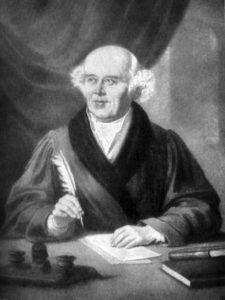What is Homeopathy?
And what to expect at a consultation
In your search for homeopathy, you may have already come across ideas such as ‘like cures like’, the minimum dose, individualised prescribing and holistic medicine. All these things describe aspects of homeopathy, but what do they mean, how did someone come up with these ideas, and what does it involve on a practical level?
In 1790, a doctor and pharmacist, Samuel Hahnemann, dissatisfied with the explanation of why Cinchona bark was a treatment for malaria, decided to experiment. Taking a radical step, he ingested the Cinchona bark, and from being perfectly well, he developed fever, chills, throbbing headache and thirst, all characteristic symptoms of malaria.



This first experiment led to more research and trials with the medicines of the day. Sure enough, a consistent pattern emerged. When taken by a healthy person, the various herbs and minerals created symptoms typical of the diseases they were being used to treat. These experiences pointed to two general principles of homeopathic medicine. Firstly, that like cures like (homeo = similar, pathos = suffering). Secondly, systematic experiments, rather than speculation, are needed to discover the healing potential of medicines.
So, is it dangerous to give a remedy that causes symptoms in people? Is homeopathy safe? Thankfully, another principle of homeopathy, the use of the minimum dose, emerged during Hahnemann’s experiments. With trial and error, he found that diluting and vigorously shaking the medicines with each step of dilution led to a gentle and safe action and more effective results.
The Consultation
We now use thousands of different remedies, some with thousands of indications. Likewise, a person can experience their disease in infinite ways. The consultation aim is to understand this individuality and match it to a similar pattern seen in a remedy.
For example, headaches could always begin in the morning, afternoon, evening, or even at a specific time. They may be better or worse for cold, heat, pressure, touch, stooping or eating. The pain could be throbbing, stabbing or dull. Digestive problems or emotional changes could happen at the same time.
How environment and circumstances affect a patient generally is also taken into account. Reactions to weather and temperature, food preferences and dislikes, times of general tiredness, emotional character, physical and mental weaknesses, previous illnesses, and even the patient’s family history of diseases are all examples that can be crucial in selecting the correct remedy.
This scope of investigation makes homeopathy a holistic approach, with terms like ‘treating the person rather than the disease’ used to describe it.
Gathering lots of information means that consultations are much longer than an average visit to the doctor. My first adult consultation is up to 90 minutes, while follow-ups can be up to 60 minutes. I may also need to study your case, which means you don’t get a remedy on the day. I post it to you instead.
After 3-6 weeks, at a follow-up appointment, any changes are assessed and more information can be shared. The number of follow-ups needed varies from person to person. Sometimes, a patient may experience the desired outcome after only one or two appointments. For other patients, restoring health can be a long process. Homeopathy is individualised medicine, and I aim to adapt my approach to your needs.
While I may have different ideas from the orthodox approach, I recommend you maintain your relationship with your GP or specialist. They are the diagnostic experts. Their medicines may be stabilising your condition and possibly even keeping you alive. Even though your health may improve, it is never my job to tell you to change your prescribed conventional medication.
Taking remedies alongside conventional drugs is safe. However, some medicines can make it difficult to get an accurate idea of a patient’s symptoms and act in an antidoting way to remedies. So, I will ask what medication you are on to adjust my prescribing.